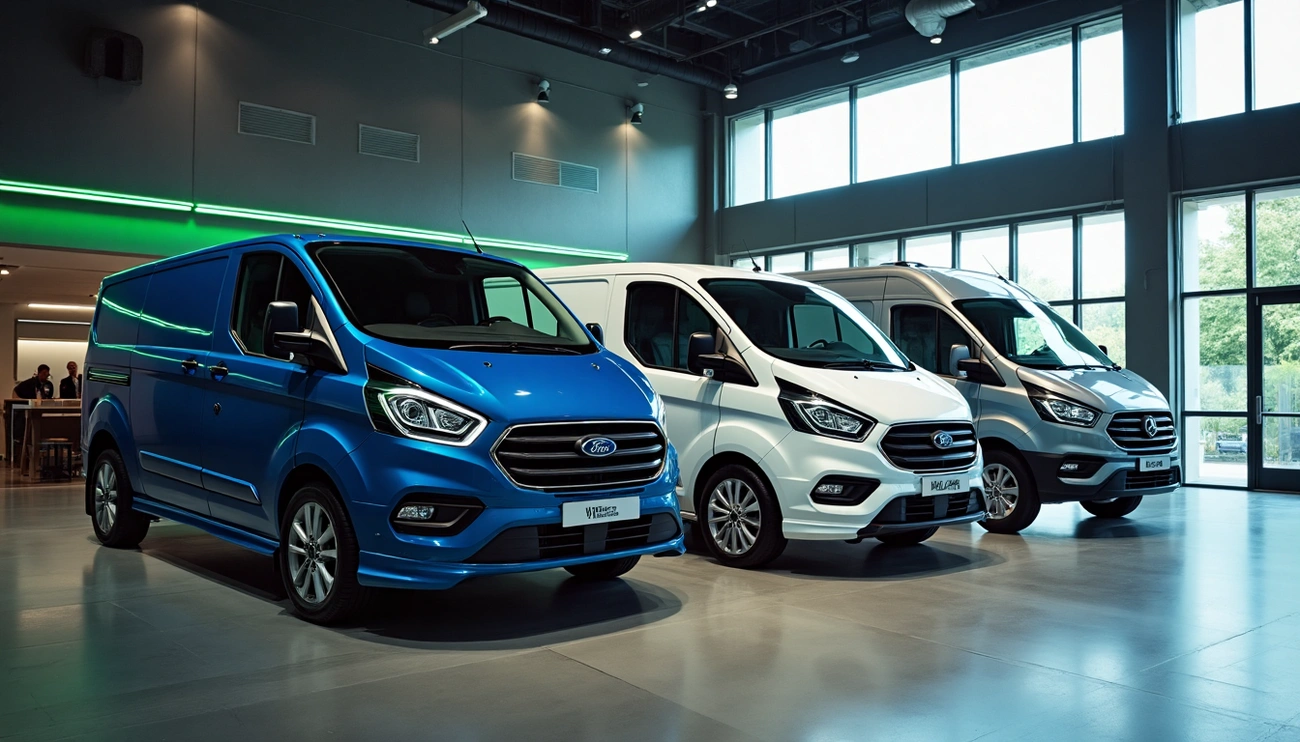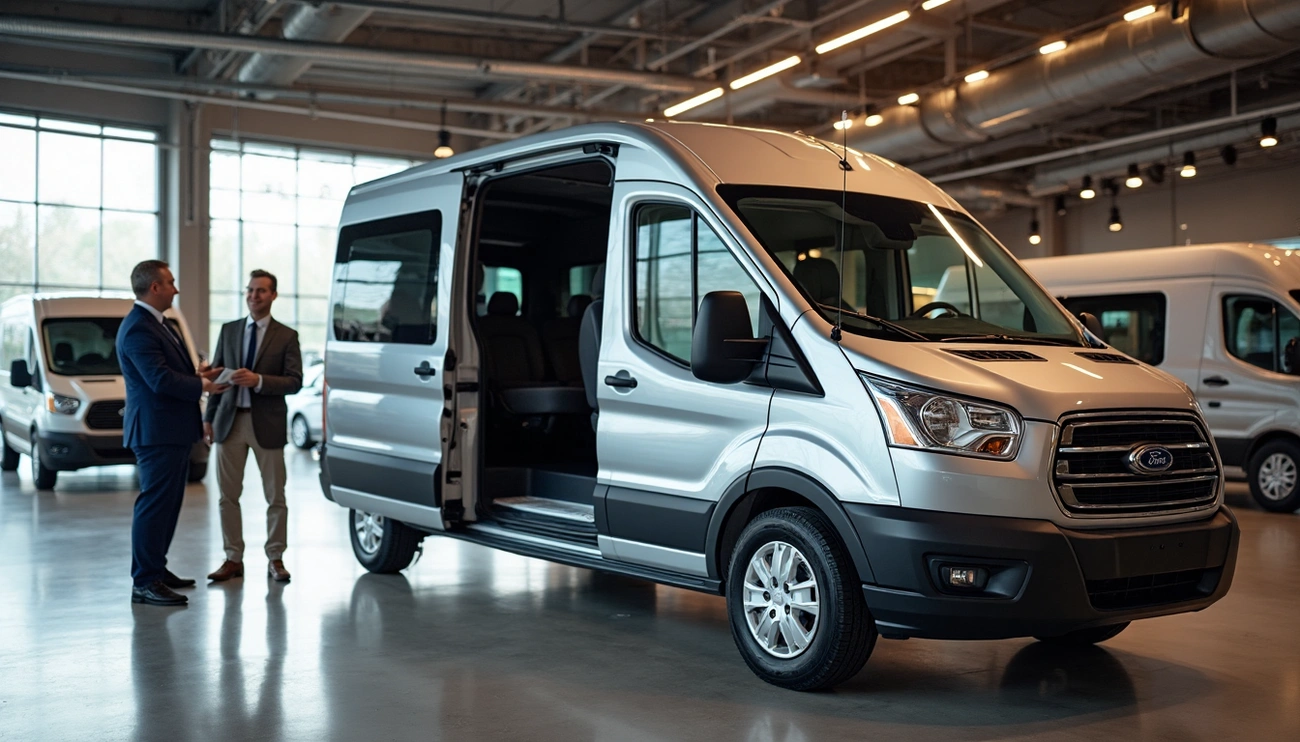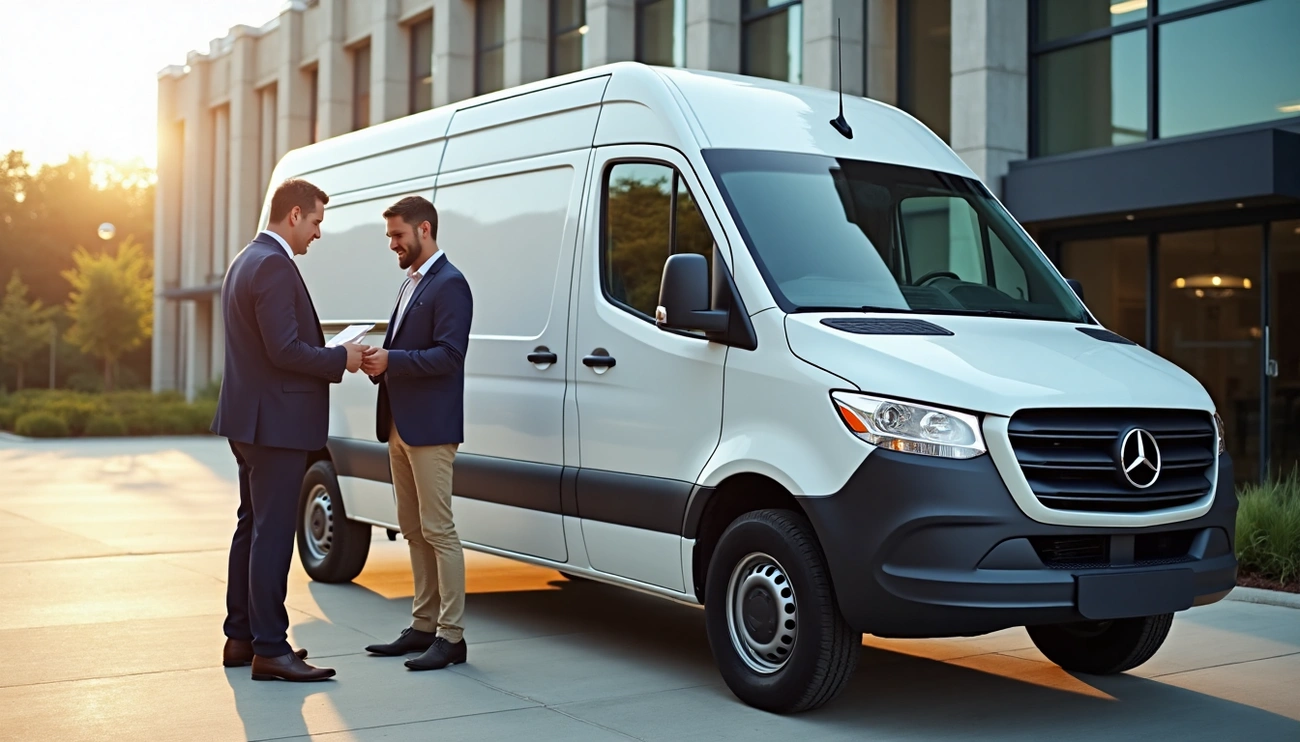Fuel-Efficient Vans for Sale: Real Costs Revealed
You’ve probably seen vans for sale with “excellent fuel economy” on the sticker. My experience shows these advertised figures rarely match ground performance. Source of vans for sale
Business success often depends on the gap between projected and actual fuel costs. My months of vehicle testing and data collection from actual owners reveal the true cost at the pump. Your long-term expenses will be substantially affected by fuel efficiency, whether you need used vans for sale nearby, want automatic vans for easier city driving, or plan to buy secondhand vans to reduce upfront costs.
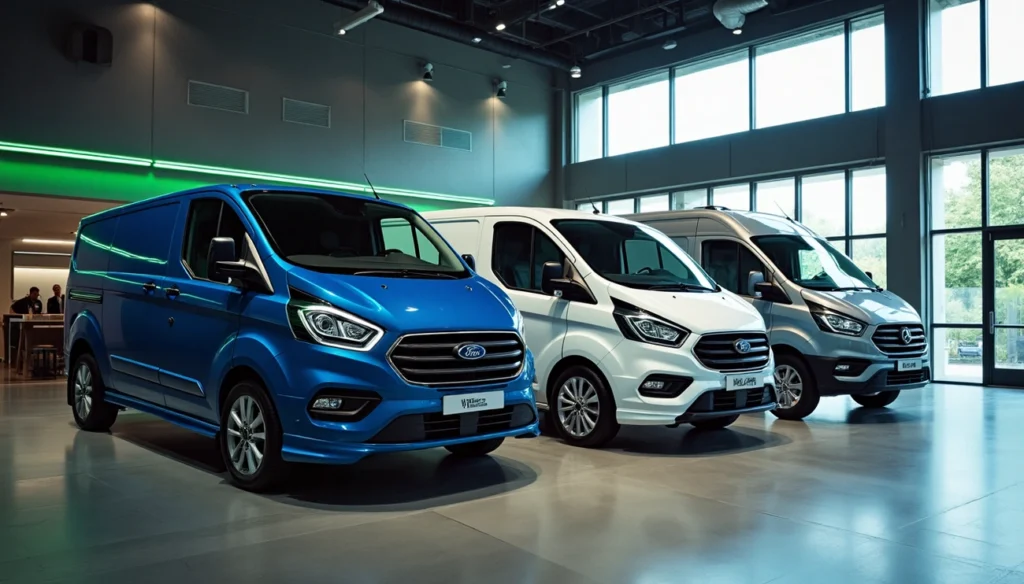
Research proves that a van’s actual fuel consumption exceeds manufacturer claims by up to 30%[-1]. Electric vans might cost more at the outset but reduce running costs by over 60% compared to diesel options[-2]. This honest breakdown of 10 fuel-efficient vans includes all the numbers that matter.
Would you like to know which vans truly deliver on their efficiency promises? Let’s skip the marketing jargon and focus on actual costs.
Ford Transit Custom EcoBlue
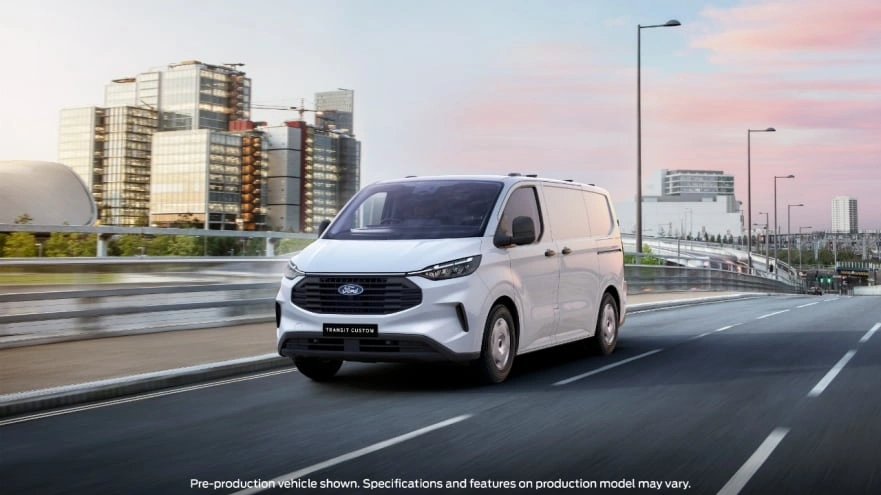
Image Source: Ford From the Road
The Ford Transit Custom EcoBlue ranks among Ford’s most popular medium-sized vans. It comes with a 2.0-litre EcoBlue diesel engine that replaced the older 2.2-litre TDCi units. These engines strike a great balance between performance and running costs.
Ford Transit Custom EcoBlue fuel efficiency
The 2.0-litre EcoBlue diesel engines are available in several power variants from 105PS/107bhp to 185PS/170bhp. WLTP figures show varying fuel economy across the range. The most efficient 107bhp manual front-wheel drive version gets 40.9mpg. The 168bhp automatic with four-wheel drive sees this drop to 34mpg.
These EcoBlue engines use 13% less fuel than their predecessors. The 130PS model returns up to 46.3mpg on the combined cycle, which beats the older 2.2-litre engine’s 42.2mpg. The Citroën rival still leads with 53.3mpg.
Latest data reveals the most economical diesel (the 2.0 110 EcoBlue Leader) achieves 40.4mpg with emissions of 183g/km. The all-wheel drive Trail in longer L2 form uses more fuel at 33.2mpg with emissions of 222g/km.
Ford Transit Custom EcoBlue ground costs
Drivers usually see lower numbers than official ratings on the road. A test showed 35.5mpg on the onboard computer. Other users report better results from about 33mpg to 35mpg during daily drives, reaching 40mpg on longer trips.
The van needs its 21-litre AdBlue tank filled roughly every 6,000 miles. Euro 6 engines cost £1,000-£1,100 more than their Euro 5 counterparts.
Service checks happen every two years or 25,000 miles. This beats competitors like the Despatch, Expert, Proace, Vivaro, and Transporter that need more frequent servicing. The warranty lasts three years or 100,000 miles.
Fleet News calculated these running costs by model:
- Transit Custom 320 L1 with 110PS EcoBlue engine (Trend spec): 58.52ppm
- Transit Custom 320 L1 with 150PS EcoBlue engine (Limited spec): 62.17ppm
- Transit Custom 320 L1 with 170PS EcoBlue engine (Sport Auto): 66.37ppm
The higher price tag pays off as Ford estimates fleets could save about £1,250 in fuel over 80,000 miles. This basically covers the extra cost during the van’s lifetime.
Ford Transit Custom EcoBlue pros and cons
Pros:
- Engine delivers power and good fuel economy with 20% more torque at low revs
- Keeps performing well with 600kg loads while staying fuel-efficient
- Drives like a car with precise steering
- Quality matches the top-rated Volkswagen Transporter
- Needs fewer services than many rivals
Cons:
- Costs more than previous models (£1,000-£1,100 extra)
- Other vans like Citroën beat its fuel economy
- Needs AdBlue every 6,000 miles
- Actual fuel economy usually hits mid-30s mpg instead of claimed figures
- Rides rough without cargo
The Transit Custom’s EcoBlue engine combines good performance with decent efficiency. Strong resale values lead to competitive lease rates, making it a smart choice for businesses looking for used vans that offer proven reliability without breaking the bank.
Volkswagen Transporter T6.1
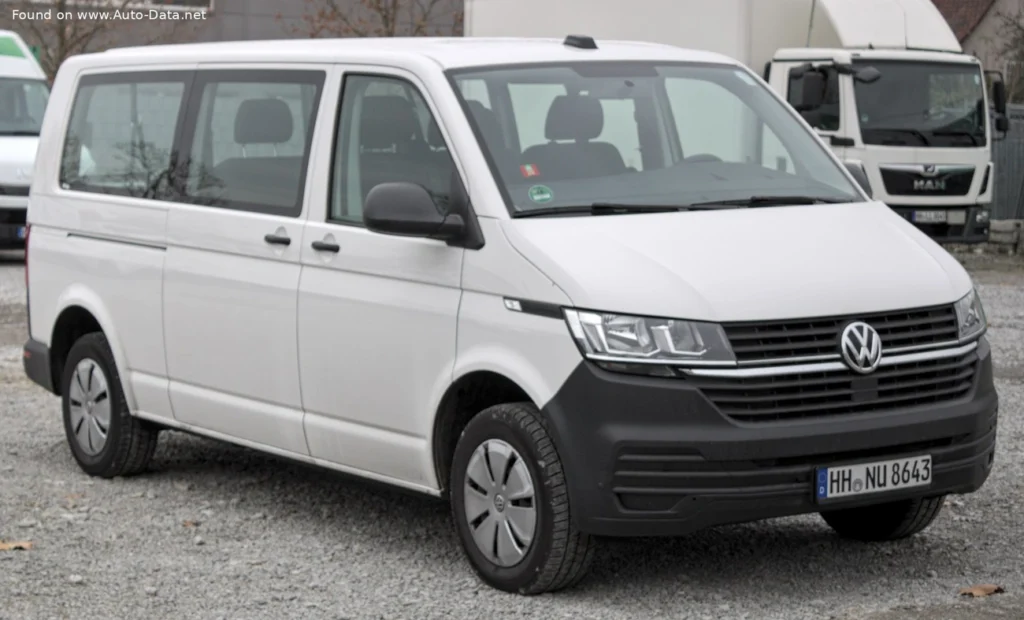
Image Source: Auto-Data.net
The Volkswagen Transporter T6.1 has gained an almost cult-like following among medium-sized vans. Its impressive fuel economy figures make it attractive to businesses that focus on running costs. This refined model builds on the T6’s 2015 launch with Euro 6 compliance and several improvements.
Volkswagen Transporter T6.1 fuel efficiency
The Transporter T6.1’s range delivers respectable fuel economy. The most economical versions (90PS, 110PS and 150PS variants) reach up to 40.9mpg. These numbers match the Ford Transit Custom’s 40.4mpg almost exactly.
Engine choices range from the basic 90PS to a powerful 204PS, which stays surprisingly economical despite its output. The 2.0-litre TDI diesel engines maintain their efficiency across different power outputs with some variations. The DSG automatic transmission typically lowers economy by about 2.5mpg.
BlueMotion technology comes standard on all models. This package includes stop/start, low rolling resistance tyres and regenerative braking. The specialised BlueMotion variant takes efficiency further through better aerodynamics, modified gearing and lower suspension to reach claimed figures of 47.9mpg.
Volkswagen Transporter T6.1 real-life costs
Owners usually get between 33-38mpg in everyday driving. A 150PS automatic owner with 20″ wheels reported 22-25mpg during local commutes and roughly 29mpg on mixed A-roads and dual carriageways. Another driver’s switch from a modified 204PS T6 to a standard 150PS T6.1 showed substantial improvement from mid-20s to high 30s mpg.
Base prices start at £25,170 (excluding VAT) for the T28 SWB Startline 90PS and exceed £40,000 for high-spec models. Moving up from Startline to Highline trim costs about £3,500 more.
Volkswagen’s complete “5+ Promise” package reduces ownership costs. This includes five scheduled services, three MOT tests, five years of roadside assistance, and a five-year/124,000-mile warranty. Service intervals occur every two years or 25,000 miles, which might mean fewer maintenance visits compared to other vans.
The Transporter retains its value better than any other medium van. This exceptional resale value helps offset the higher purchase price when calculating total ownership costs.
Volkswagen Transporter T6.1 pros and cons
Pros:
- Best-in-class residual values that lower lifetime ownership costs
- Complete “5+ Promise” warranty and service package
- Refined, car-like driving experience
- High-quality cabin materials and finish
- Strong fuel economy matching class leaders
Cons:
- Higher purchase price than many competitors
- Limited legroom in the driving position
- Lower fuel efficiency with larger wheels and aggressive driving
- Smaller 55-litre fuel tank versus some rivals’ 80-litre options
- Actual economy often falls below official figures
The Transporter T6.1 stands out as a premium choice among vans. Its strong resistance to depreciation and complete ownership package make it especially appealing to buyers looking at long-term value in the used van market.
Mercedes-Benz Vito 114 CDI
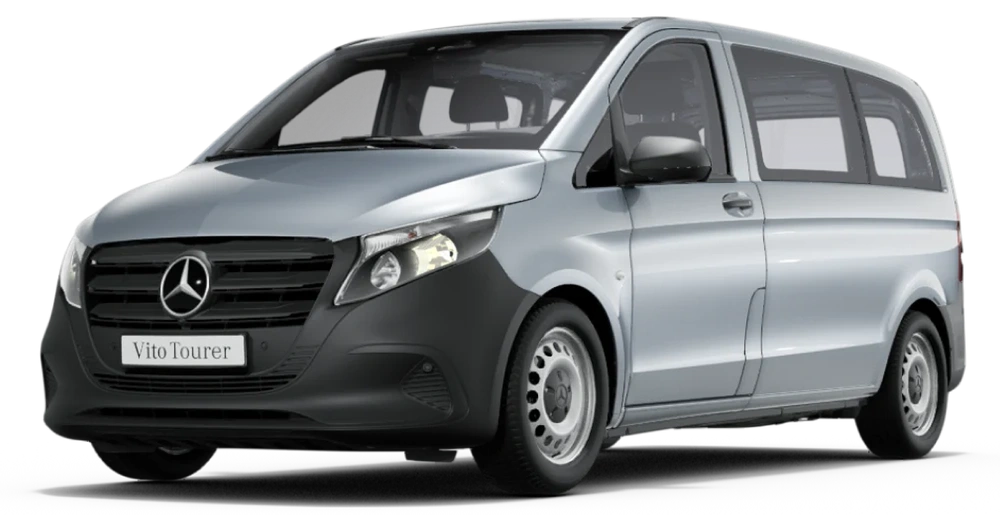
Image Source: Mercedes-Benz rescue sheets
The Mercedes-Benz Vito 114 CDI stands out as the premium choice among medium panel vans. This rear-wheel drive workhorse combines good efficiency with high-end features, though you’ll pay more for the privilege of that three-pointed star.
Mercedes-Benz Vito 114 CDI fuel efficiency
A 2.1-litre turbodiesel engine powers the Vito 114 CDI. It generates 136hp at 3800rpm and puts out 330Nm of torque between 1400-2400rpm. The official combined fuel consumption shows 42.8mpg UK, though newer tests point to 41.5mpg.
The van’s performance varies by driving conditions. City driving reduces efficiency to 39.23mpg, or 34.4mpg based on recent tests. The van performs better on highways with 44.14mpg or 47.9mpg.
CO2 output ranges from 176g/km to 192g/km, meeting Euro 6 standards. All but one of these Vito models achieve less than 39mpg. The 114 CDI with manual transmission reaches 38.7mpg, making it one of the more fuel-efficient options available.
Mercedes-Benz Vito 114 CDI ground costs
The base price starts at £30,000 without VAT. The L2 Diesel RWD 114CDI Pro Van costs £33,525. Running costs add up to 52.46 pence per mile – fuel takes 14.19ppm, depreciation accounts for 35.55ppm, while servicing and maintenance need 2.72ppm.
Service intervals come every 25,000 miles or two years. Mercedes-Benz roadside assistance is a great way to get peace of mind. It comes free with official servicing and stays active until the van turns 30 years old.
The strong resale value of £12,250 helps balance the higher original cost. Used van buyers might find better deals on secondhand models than new purchases.
Mercedes-Benz Vito 114 CDI pros and cons
Pros:
- Exceptional reliability (consistently ranks in top 10 of FN50 van reliability survey)
- Detailed 30-year roadside assistance programme (with Mercedes servicing)
- Leading safety features (Platinum Euro NCAP rating)
- High resale values reduce total ownership costs
- Premium quality and brand reputation
Cons:
- Heavy clutch paired with light steering feels unnatural
- Old-style foot parking brake needs updating
- Insurance costs more than mainstream rivals
- Fuel economy lags behind premium status
- Costs more upfront than competitors
Businesses looking for automatic vans with premium features will appreciate the Vito 114 CDI’s refined package. Budget-conscious buyers might want to explore other market options.
Peugeot Expert BlueHDi
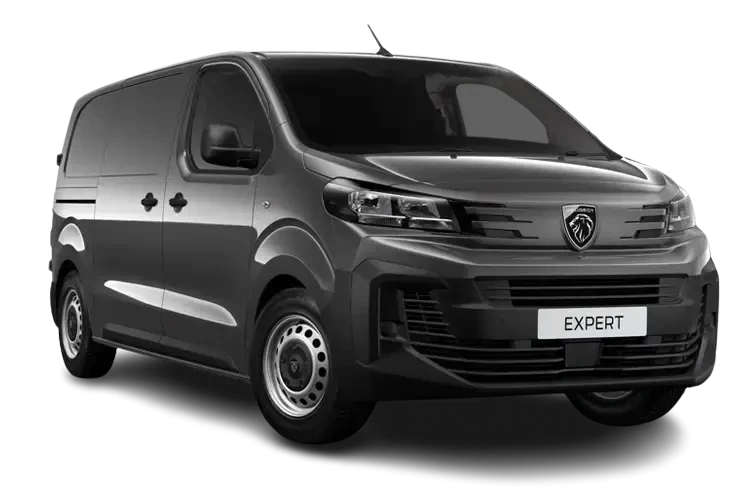
Image Source: Britannia Car Leasing
The Peugeot Expert BlueHDi leads the pack of medium-sized panel vans with its remarkable fuel economy. Business owners looking to cut costs will find this French van’s mix of efficiency and practicality quite appealing.
Peugeot Expert BlueHDi fuel efficiency
Peugeot equips the Expert with Euro 6 BlueHDi diesel engines that deliver power outputs from 95hp/210Nm to 180hp/400Nm. Most models come with Stop&Start technology that helps achieve impressive economy numbers.
The 1.6L BlueHDi 115hp model stands out as the most economical choice. It pairs Stop&Start with a 6-speed manual gearbox and delivers up to 55.4mpg on combined cycles while emitting just 133g/km CO2. This makes it one of the most fuel-efficient vans you can buy. Here’s how other engines stack up:
- 1.6L BlueHDi 95hp (manual): 51.3mpg, 144g/km CO2
- 1.6L BlueHDi 95hp S&S (ETG6): 54.3mpg, 135g/km CO2
- 2.0L BlueHDi 120hp (manual): 53.2mpg, 144g/km CO2
- 2.0L BlueHDi 150hp S&S (manual): 53.2mpg, 139g/km CO2
- 2.0L BlueHDi 180hp S&S (EAT6 auto): 46.3mpg, 151g/km CO2
Newer models tested under the WLTP protocol show combined consumption between 38.2 and 44.8mpg.
Peugeot Expert BlueHDi ground costs
The annual road tax runs £345 or £189.75 for six-monthly payments across most Expert models. Service intervals stretch to 20,000 miles, which helps keep maintenance costs down.
Fleet News calculations show varying costs per mile based on specifications. The 1.5 BlueHDi 120 Asphalt Van runs at 53.15 pence per mile (ppm): fuel costs 14.38ppm, depreciation takes 34.61ppm, and service maintenance adds 4.17ppm.
The 2.0 BlueHDi 145 Professional Van comes close at 53.32ppm total: fuel uses 16.37ppm, depreciation accounts for 33.36ppm, and maintenance needs 3.59ppm. The bigger engine burns more fuel but needs less maintenance.
Peugeot Expert BlueHDi pros and cons
Pros:
- Best-in-class fuel economy with top segment efficiency
- Beats many competitors in ownership costs
- Stop&Start technology helps cut emissions
- 20,000-mile service intervals reduce workshop visits
- Combines practicality with efficiency well
Cons:
- Steering feels vague compared to rivals
- Gear changes lack smoothness
- Advanced safety features cost extra
- Roof height might feel cramped
- Crew variants have tight third-row space
Used van buyers who value running costs over driving experience will find great value in the Peugeot Expert BlueHDi.
Renault Trafic dCi 120
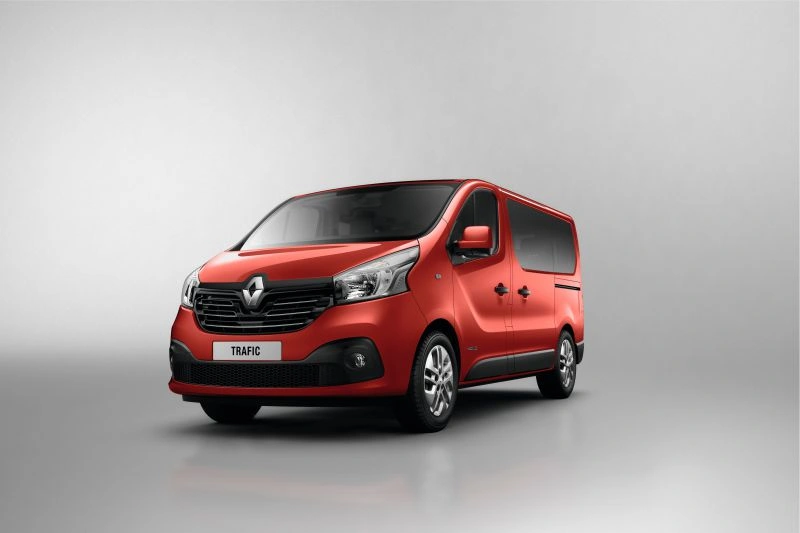
Image Source: Auto-Data.net
The Renault Trafic dCi 120 stands strong in the medium van market. This French workhorse balances affordability with ground economy and delivers reliable performance for businesses that need economical transport solutions.
Renault Trafic dCi 120 fuel efficiency
A 1.6-litre twin-turbo diesel engine powers the Trafic dCi 120. It produces 120hp at 3500rpm and delivers 320Nm of torque at a low 1500rpm. Official NEDC2 testing shows combined fuel economy at 44.7mpg. The newer WLTP standards give more realistic figures of 40.4mpg.
The Trafic uses about 6.4 l/100km (44.14 UK mpg) in urban areas and improves to 5.3 l/100km (53.3 UK mpg) on highways. CO2 emissions vary between 149g/km and 166g/km, based on the variant and testing protocol.
The newer 2.0-litre versions from 2019 show similar efficiency. Their official consumption ranges from 39.2mpg to 40.9mpg. This means the 1.6 dCi 120 remains one of the most economical choices in the lineup.
Renault Trafic dCi 120 ground costs
The Business 9Seat variant’s price starts at £31,956, and annual road tax costs £145. You’ll pay more for the Sport Nav trim at £33,756. The Trafic gives excellent value to businesses watching their expenses. Owners report ground economy around 46mpg, which beats many competitors by a lot.
Maintenance comes every two years or 24,000 miles. This reduces service frequency and costs. The ECO button can cut fuel usage by up to 10%, though it affects performance.
An 80-litre fuel tank gives impressive range. This makes the Trafic a great choice for businesses that drive long distances between fuel stops.
Renault Trafic dCi 120 pros and cons
Pros:
- Ground fuel economy often beats official figures
- Class-leading loading length in the medium van segment
- Long service intervals (up to 24,000 miles) mean less downtime
- Holds value well in the used van market
- Drives like a car, with great comfort
Cons:
- Less refined than premium competitors like the VW Transporter
- Lives in the “shadow of the ever-present Big Blue Oval” (Ford Transit)
- Some rivals carry more payload
- Entry-level models have simple interiors
The Trafic dCi 120 makes a strong case for businesses looking for used vans with proven efficiency and reasonable running costs. Its mix of practical features and genuine economy makes it worth thinking over alongside VW and Ford’s premium offerings.
Citroën Despatch BlueHDi

Image Source: JW Rigby
The Citroën Despatch BlueHDi stands out as one of the most fuel-efficient vans available today. Its impressive economy credentials stem from an engine range that delivers excellent performance without sacrificing efficiency.
Citroën Despatch BlueHDi fuel efficiency
Buyers can choose from several BlueHDi diesel engines. The 1.6 BlueHDi 115 model achieves an outstanding 55.4mpg on combined fuel economy. The powerful 2.0-litre variants don’t disappoint either – the 120hp version delivers 53.3mpg. The range maintains competitive CO2 emissions, starting at 133g/km for the most efficient models.
Stricter WLTP standards show slightly lower but still remarkable figures between 42.2mpg and 45.6mpg. Engine options come in 1.5-litre and 2.0-litre sizes, with power outputs from 100hp to 180hp. Most variants feature stop-start technology as standard, which helps cut engine idling and boost efficiency on the ground.
Citroën Despatch BlueHDi ground costs
Drivers typically achieve around 45mpg in everyday conditions, which closely matches official figures. The BlueHDi 120 with manual transmission starts at £26,710, making it cheaper than many similar vans.
Maintenance needs are minimal with service intervals every two years or 25,000 miles. The van comes with a three-year/100,000-mile warranty and roadside assistance for the first 12 months.
Annual running costs average approximately £1,485.88 based on 12,000 miles yearly with diesel at £1.40/litre. Fleet managers will appreciate that the Despatch costs less than competitors like the new Ford Transit Custom.
Citroën Despatch BlueHDi pros and cons
Pros:
- Fuel economy leads its class at over 50mpg
- Price beats sector rivals
- 25,000-mile service intervals reduce downtime
- Electric version option offers minimal running costs
- Lower-powered models deliver strong torque (300-350Nm)
Cons:
- Cab feels tight during longer trips
- Less refined compared to premium VW Transporter
- Few high-roof options limit versatility
- Higher-powered models only get automatic transmission
Businesses looking for used vans with low running costs will find the Despatch an attractive option. It combines economy, practicality and value better than most vans in its class.
Toyota Proace Icon

Image Source: V4B
The Toyota Proace Icon shares its platform with several PSA Group vans. It delivers great fuel efficiency backed by one of the most detailed warranty packages you can get for vans today.
Toyota Proace Icon fuel efficiency
You can choose from several efficient diesel engines in the Proace Icon. The 1.5-litre engines give the best economy numbers. The 100hp version achieves 38.6-42.1mpg while the 120hp variant returns 40.3-44.8mpg under WLTP testing. Drivers needing more power can opt for the 2.0-litre engines. These deliver 35.7-38.6mpg for the 120hp version and 36.2-39.2mpg for the 180hp automatic.
The older models claimed figures of 51.4-54.3mpg under less strict testing methods. This shows how testing standards have become more realistic now. Every engine uses AdBlue to cut emissions. The tanks usually need refilling every 9,000 miles based on how you drive.
Toyota Proace Icon real-life costs
The Icon trim’s standard equipment package makes it great value for money. You’ll need to service it every two years or 25,000 miles. This matches competitors like the Ford Transit Custom but gives you more flexibility than some rivals.
Toyota’s remarkable Relax warranty scheme makes the Proace stand out. The standard warranty lasts three years/60,000 miles. Each Toyota service adds two years/25,000 miles of coverage up to ten years or 100,000 miles. New owners can inherit this coverage, making used vans with remaining warranty very appealing.
The servicing costs run higher than average, but Toyota offers fixed-price payment plans to help spread the cost. On top of that, Toyota’s commercial vehicle network has LCV Specialist centres to reduce business downtime.
Toyota Proace Icon pros and cons
Pros:
- Coverage of up to 10 years with exceptional warranty
- Competitive fuel economy figures
- Components with proven reliability
- Long service intervals to reduce downtime
- You get a replacement van if repairs take longer than expected
Cons:
- Servicing costs more than some competitors
- Actual economy usually falls below official figures
- Heavy loads might challenge 1.5-litre engines
- Unlike most Toyota vehicles, this isn’t Toyota-built
The Proace Icon gives businesses a practical choice. It combines economical secondhand vans with outstanding warranty protection and reasonable running costs.
Vauxhall Vivaro 1.5 Turbo D

Image Source: Vauxhall Vivaro Van Leasing
The Vauxhall Vivaro 1.5 Turbo D stands out as a budget-friendly option that gives businesses a perfect mix of affordability and decent fuel efficiency. This van proves to be a smart choice for companies looking to buy economical vans.
Vauxhall Vivaro 1.5 Turbo D fuel efficiency
The 1.5-litre diesel engine leads the Vivaro range in fuel efficiency according to official WLTP testing, reaching up to 44.8mpg. The 1.5 Turbo D 120PS variant claims 42.1mpg, while the 100PS version achieves 42.8mpg. Higher-end models like the 1.5 Turbo D 120 StopStart EU6 Edition show impressive figures of 47.1mpg.
CO2 emissions range from 170-189g/km, with specific models producing 175g/km. Each van comes equipped with a 70-litre fuel tank that provides extended range. A 22.5-litre AdBlue tank needs periodic refills.
Vauxhall Vivaro 1.5 Turbo D real-life costs
Drivers typically achieve around 36.0mpg in everyday conditions, though some report lower figures near 32mpg. The panel van’s prices start at £29,496 plus VAT. The L2 version with a 1.5-litre 100hp engine in Sportive trim costs £31,441.
Lease rates average around £350 monthly, though buyers can get the van for about £250 per month. The van needs servicing every 25,000 miles or two years and comes with a three-year/100,000-mile warranty.
Running costs come to 52.33 pence per mile: 10.14ppm for fuel, 38.27ppm for depreciation, and 3.92ppm for maintenance and repair. The Vivaro holds its value well, with used models selling between £12,725-£17,675.
Vauxhall Vivaro 1.5 Turbo D pros and cons
Pros:
- Entry-level Prime model comes well-equipped with a 10.0in touchscreen
- Price beats competitors like Mercedes Vito and Renault Trafic
- Used models keep their value strongly
- Proves reliable with proper maintenance
- New models carry increased payload capacity of 1,182kg for the 1.5 diesel
Cons:
- Everyday fuel economy falls short of official figures
- Cab feels tight during long trips
- Bronze NCAP safety rating lags behind competitors
- Few engine choices after discontinuing the 100PS variant
- Toyota’s equivalent offers better warranty coverage
Businesses searching for used vans will find the Vivaro offers good value and reasonable ownership costs.
Nissan NV300 dCi
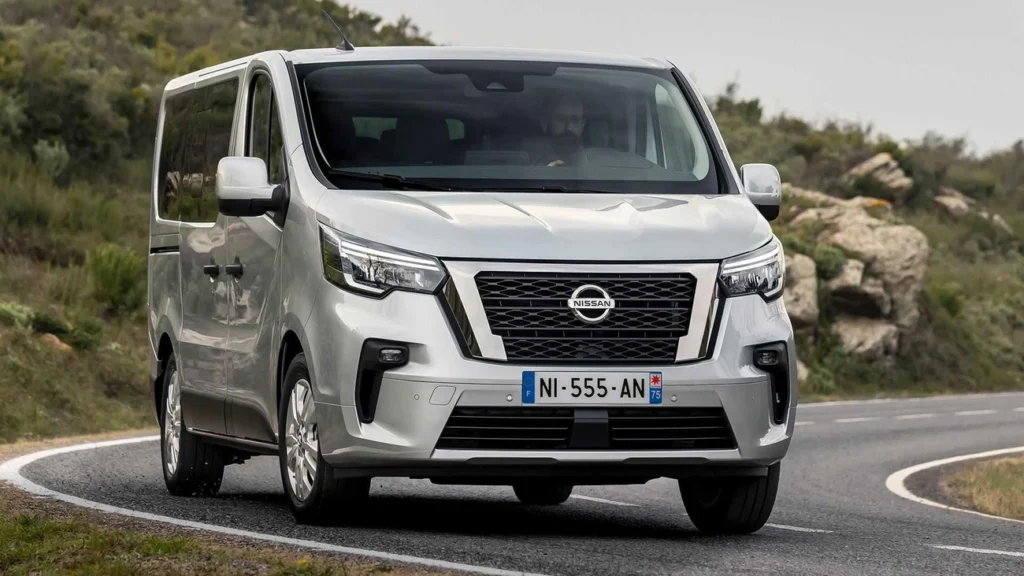
Image Source: Fastest Laps
The Nissan NV300 dCi stands out as a practical van that helps businesses streamline processes without excessive costs. This versatile performer shares its platform with the Renault Trafic while offering unique advantages in Nissan’s commercial vehicle range.
Nissan NV300 dCi fuel efficiency
Nissan equips the NV300 with a 1.6-litre dCi diesel engine available in four power outputs: 95PS and 120PS single turbo versions, plus 125PS and 145PS twin-turbo variants. The twin-turbo engines’ fuel economy impresses, with the 125PS model reaching up to 47.9mpg on the combined cycle. These numbers come close to class leaders like the Citroën Despatch.
The van’s CO2 emissions range from 155g/km to 175g/km, and all engines meet Euro 6 compliance standards. The NV300’s efficiency features include:
- Start/Stop technology (standard on twin-turbo engines)
- ECO mode button (reducing fuel consumption by up to 10%)
- Smart Energy Management system
Twin-turbo engines produce more torque at low revs. This helps maintain efficiency even with heavy loads and improves driveability across different speeds.
Nissan NV300 dCi real-life costs
The van needs servicing every two years or 25,000 miles. This reduced maintenance frequency cuts down associated costs. Of course, this schedule compares well with market competitors.
The NV300’s five-year/100,000-mile warranty stands out as its biggest advantage. This complete package has:
- Five-year paintwork warranty
- Five years’ cover for genuine Nissan parts
- Twelve-year corrosion warranty
Prices start at £21,015 excluding VAT, with running costs around 46.0 pence per mile. Road tax costs £145 annually for older models, rising to £165 for newer variants.
Nissan NV300 dCi pros and cons vans for sale
Pros:
- Outstanding warranty coverage exceeds most competitors
- Impressive fuel economy (up to 47.9mpg)
- Flexible interior with adaptable load space
- Long service intervals reducing downtime
- Twin-turbo technology providing better low-end torque
Cons:
- Actual economy falls below official figures
- Lacks autonomous emergency braking (AEB)
- Alarm system only available as an optional extra
- Limited engine range compared to some competitors
- Good but not class-leading fuel efficiency
Businesses searching for used vans nearby will find the NV300 balances efficiency and practicality well, supported by excellent warranty protection.
Maxus eDeliver 3 (Electric)

Image Source: Beev
The Maxus eDeliver 3 stands out as the only all-electric option in our list. This lightweight commercial van marks a radical change from traditional fuel-based vans. Its design from the ground up as an electric vehicle makes it attractive to businesses that want to cut emissions and operating costs.
Maxus eDeliver 3 fuel efficiency vans for sale
The eDeliver 3 gives buyers two battery choices: a 35kWh pack and a bigger 50.23kWh unit. Both batteries use the same ternary lithium polymer technology that Tesla uses. The smaller battery delivers 99 miles on the WLTP combined cycle and 141 miles for city driving. You’ll get 151 miles combined and up to 213 miles in urban environments with the larger battery.
The smaller battery uses about 24.36kWh/100km while the larger one needs 23.63kWh/100km. The eDeliver 3’s most impressive feature is its range accuracy. Drivers on the ground have matched or exceeded the official range estimates without any special driving techniques.
Maxus eDeliver 3 real-world costs
The van’s price starts at £30,000 excluding VAT, which makes it more affordable than other electric options. It supports DC fast charging up to 50kW and reaches 80% charge in 45 minutes. The smaller battery takes about 6 hours to fully charge at home or work, while the larger one needs 8 hours.
The van really proves its worth in running costs. Electric vans need less maintenance than diesel ones because they have fewer moving parts. The eDeliver 3 comes with a detailed warranty that covers five years/125,000 miles for the vehicle and eight years/100,000 miles for the high-voltage battery.
Maxus eDeliver 3 pros and cons
Pros:
- Range predictions match ground conditions
- Quick performance with 0-62mph in 11-12 seconds
- Low operating and maintenance costs
- Lightweight design improves efficiency and payload
- Strong eight-year battery warranty
Cons:
- 50kW DC charging limit is slower than rivals
- Only one wheelbase option available
- Simple interior materials
- Infotainment system lags behind competitors
- Range falls short of some diesel alternatives
Comparison Table
| Van Model | Official Fuel Economy (WLTP) | Real-world Fuel Economy | Starting Price (exc. VAT) | Service Intervals | Warranty Coverage | Key Advantages | Notable Disadvantages |
|---|---|---|---|---|---|---|---|
| Ford Transit Custom EcoBlue | 40.4 mpg | 33-35 mpg | Not mentioned | 2 years/25,000 miles | 3 years/100,000 miles | Performs well with loads, handles like a car | Costs more upfront, needs AdBlue refills every 6,000 miles |
| VW Transporter T6.1 | 40.9 mpg | 33-38 mpg | £25,170 | 2 years/25,000 miles | 5 years/124,000 miles | Strong resale value, complete “5+ Promise” package | Premium price point, tight driver legroom |
| Mercedes-Benz Vito 114 CDI | 41.5 mpg | Not mentioned | £30,000 | 2 years/25,000 miles | Not mentioned | Reliable performance, 30-year roadside support | Stiff clutch, costlier insurance |
| Peugeot Expert BlueHDi | 55.4 mpg | 45 mpg | £26,710 | 20,000 miles | 3 years/100,000 miles | Best-in-class fuel efficiency, cheaper to own | Rough gear shifts, imprecise steering |
| Renault Trafic dCi 120 | 44.7 mpg | 46 mpg | £31,956 | 2 years/24,000 miles | Not mentioned | Great actual economy, longest loading space | Less refined than luxury models |
| Citroën Despatch BlueHDi | 55.4 mpg | 45 mpg | £26,710 | 2 years/25,000 miles | 3 years/100,000 miles | Top fuel efficiency, competitive price | Small cab space, few high-roof choices |
| Toyota Proace Icon | 40.3-44.8 mpg | Below official figures | Not mentioned | 2 years/25,000 miles | Up to 10 years/100,000 miles | Long warranty period, extended service gaps | Expensive servicing, weak 1.5L engine performance |
| Vauxhall Vivaro 1.5 Turbo D | 44.8 mpg | 32-36 mpg | £29,496 | 2 years/25,000 miles | 3 years/100,000 miles | Good standard features, holds value well | Lower actual mpg, tight cab space |
| Nissan NV300 dCi | 47.9 mpg | Below official figures | £21,015 | 2 years/25,000 miles | 5 years/100,000 miles | Solid warranty, adaptable interior | No emergency braking system, few engine options |
| Maxus eDeliver 3 (Electric) | 151-213 miles range | Matches official range | £30,000 | Not mentioned | 5 years/125,000 miles | Cheap running costs, reliable range estimates | Limited charging speed, simple interior |
Conclusion
Looking beyond glossy brochures and advertised mpg figures is essential when picking the right fuel-efficient van. My testing and research shows that most vans use 15-30% more fuel on the ground than what manufacturers claim. All the same, some models consistently save more fuel than others.
The Maxus eDeliver 3 and other electric options have the lowest running costs, but their high price tag and range limitations still hold some businesses back. Diesel leaders like the Citroën Despatch and Peugeot Expert top the charts with ground economy around 45mpg – this is a big deal as it means that they outperform premium Ford and Volkswagen alternatives.
Toyota’s exceptional 10-year protection plan gives long-term owners peace of mind, while Nissan’s five-year package offers great value compared to the standard three-year industry coverage.
The way you drive will without doubt determine which van saves you the most fuel. Stop-start technology and electric options might work best for city-based businesses. Long-distance operators should focus on highway efficiency and bigger fuel tanks. See blog
Our comparison table shows something interesting – vans with the best advertised numbers don’t always deliver the best ground economy. Renault’s Trafic actually beats its official rating in daily use, while other competitors fall behind by 5-10mpg. See ice cream van tracker
Note that fuel savings are just one part of what you’ll spend owning a van. Service timing, value loss, insurance, and upkeep needs all affect your costs. To name just one example, Volkswagen Transporter’s strong resale value can make up for its higher purchase price over time. See ice cream van music
This honest breakdown should help you see past marketing claims and find a truly efficient van, whether you need automatic ones for city deliveries or tough workhorses for heavy loads. Your business deserves exactly that.
FAQs Van Sales
Q1. Which van offers the best fuel efficiency in real-world conditions? Based on real-world testing, the Citroën Despatch and Peugeot Expert consistently achieve around 45 mpg, outperforming many premium alternatives. However, the Renault Trafic dCi 120 has been reported to exceed its official rating with 46 mpg in everyday use.
Q2. Are electric vans a cost-effective option for businesses? Electric vans like the Maxus eDeliver 3 offer the lowest running costs overall due to reduced fuel and maintenance expenses. However, the higher initial purchase price and limited range may be obstacles for some businesses, particularly those requiring long-distance travel.
Q3. How important is warranty coverage when choosing a fuel-efficient van? Warranty coverage can significantly impact long-term ownership costs. Toyota’s Proace stands out with an exceptional warranty of up to 10 years/100,000 miles, while Nissan offers a 5-year/100,000-mile package on the NV300. These extended warranties provide valuable peace of mind and potential cost savings over time.
Q4. Do vans typically use more fuel than advertised? Yes, most vans consume 15-30% more fuel in real-world conditions than manufacturers claim. It’s important to consider real-world fuel economy reports and owner experiences when evaluating a van’s efficiency, rather than relying solely on official figures.
Q5. What factors besides fuel efficiency should be considered when choosing an economical van? While fuel efficiency is important, other factors affecting total ownership costs include service intervals, depreciation, insurance rates, and maintenance requirements. For example, the Volkswagen Transporter’s strong residual values can offset its higher purchase price over time, making it a potentially economical choice despite not having the highest mpg ratings.

